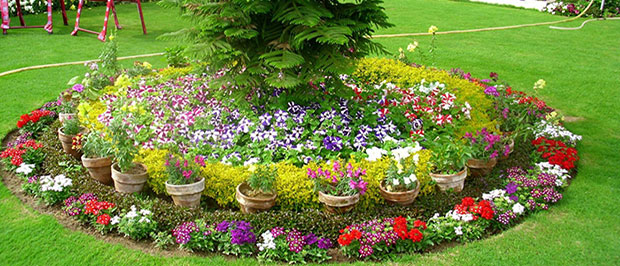Flower Bed Design and Installation in Oklahoma: Transforming Your Garden into a Blooming Paradise
Oklahoma's diverse climate and soil conditions offer a
unique canvas for garden enthusiasts to create stunning flower beds. From the
rolling plains to the lush forests, the state's natural beauty can be reflected
in a well-designed and thoughtfully installed flower bed. If you’re looking to
enhance your outdoor space, understanding the essentials of flower bed design
and installation in Oklahoma can make all the difference.
Understanding
Oklahoma's Garden Conditions
Oklahoma's climate presents both challenges and
opportunities for flower bed design. The state experiences a wide range of
temperatures and weather patterns, from scorching summer heat to chilly
winters. Additionally, soil types can vary significantly, from sandy loam to
clay-heavy soil. Successful flower bed
design and installation in Oklahoma requires an understanding of these
factors to choose plants that thrive in the local environment.
Key Considerations
for Flower Bed Design

Climate and Soil:
Start by assessing your local climate zone and soil type. Oklahoma's weather
can be unpredictable, so selecting drought-tolerant plants and incorporating
soil amendments to improve drainage and fertility will benefit your flower
bed's long-term health.
Sunlight Exposure: Determine how much sunlight your flower
bed will receive. Full-sun, partial-shade, and full-shade areas each support
different types of plants. For instance, sunflowers and marigolds thrive in
full sun, while hostas and astilbes are better suited for shaded areas.
Design and Layout:
Consider the overall design of your flower bed. Incorporate varying heights,
colors, and textures to create visual interest. Layering plants, from tall
perennials in the back to low-growing annuals in the front, can create a
dynamic and appealing display.
Watering and
Maintenance: Oklahoma's weather can be dry, so it's crucial to design your
flower bed with irrigation in mind. Drip systems or soaker hoses can provide
efficient watering. Additionally, choose plants with similar water needs to
reduce maintenance and ensure a healthy flower bed.
Installation Tips for
a Successful Flower Bed
Site Preparation:
Begin by clearing the area of weeds, rocks, and debris. Test your soil and
amend it as needed with compost or other organic matter to improve fertility
and drainage.
Plant Selection:
Choose plants that are well-suited to Oklahoma's climate and soil conditions.
Native plants, such as Black-eyed Susans and Coneflowers, are often a good
choice as they are adapted to local conditions and require less maintenance.
Plantin: Follow
the recommended planting depths and spacing for each type of plant. Proper
spacing allows for healthy growth and prevents overcrowding, which can lead to
disease and pest problems.
Mulching: Apply a
layer of mulch around your plants to help retain moisture, suppress weeds, and
regulate soil temperature. Organic mulches, such as wood chips or straw, also
improve soil health as they decompose.
Ongoing Care: Regularly monitor your flower bed for signs of
pests and diseases. Deadhead flowers to encourage blooming and prune plants as
needed to maintain their shape and health.
By selecting the right plants, preparing your site properly,
and incorporating effective design principles, you can transform your garden
into a vibrant and enduring floral paradise. Creating a captivating flower
bed design and installation in Oklahoma involves careful planning and
consideration of the state's unique environmental conditions. Whether you
tackle the project yourself or hire a professional, the result will be a
blooming testament to your dedication and creativity.

Comments
Post a Comment